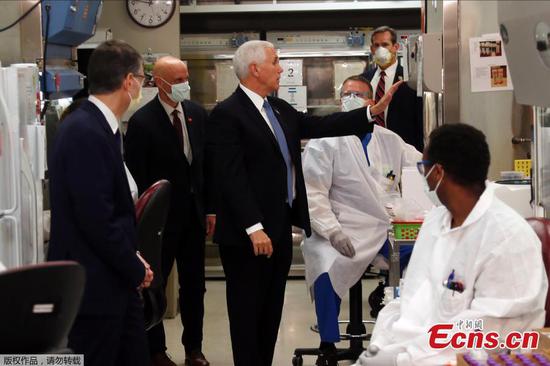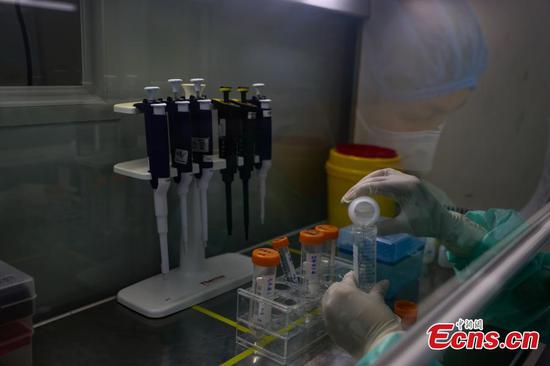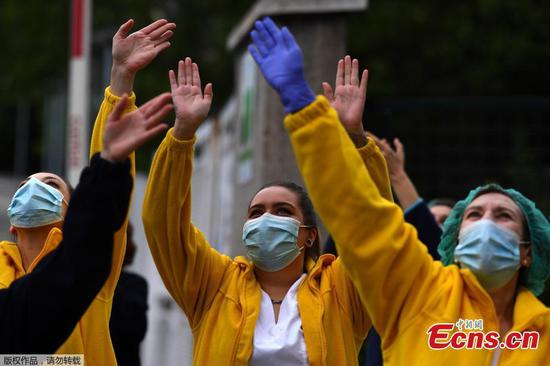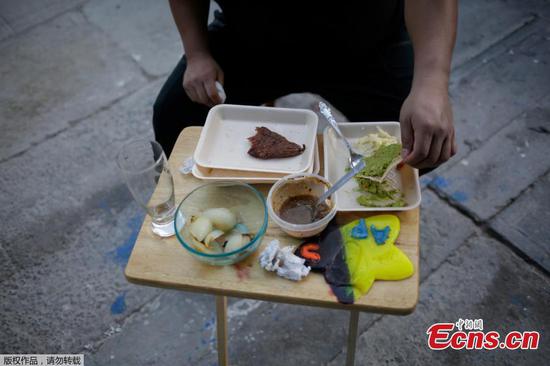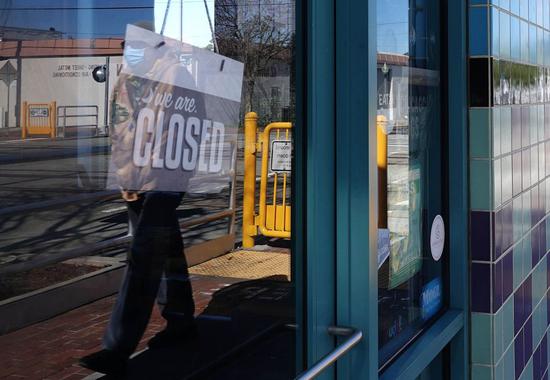
A pedestrian wearing a face mask walks past a closed shop in San Mateo City, California, the United States, April 2, 2020. (Xinhua/Wu Xiaoling)
U.S. economic activity in the first quarter contracted at an annual rate of 4.8 percent amid the COVID-19 impact, the biggest decline since the Great Recession, the U.S. Commerce Department reported Wednesday.
The decline in first quarter real gross domestic product (GDP) was, in part, due to the response to the spread of COVID-19, as governments issued "stay-at-home" orders in March, according to the "advance" estimate released by the department's Bureau of Economic Analysis.
Widespread "stay-at-home" orders and other measures to contain the virus led to "rapid changes in demand," as businesses and schools switched to remote work or canceled operations, and consumers canceled, restricted, or redirected their spending, the bureau noted.
The decrease in real GDP in the first quarter reflected negative contributions from personal consumption expenditures (PCE), nonresidential fixed investment, exports, and private inventory investment that were partly offset by positive contributions from residential fixed investment, federal government spending, and state and local government spending, the report showed.
The PCE fell at an annual rate of 7.6 percent in the first quarter, generating a 5.26 percentage point drag on the GDP in the first quarter. The PCE grew by 1.8 percent in the previous quarter, contributing 1.24 percentage points to GDP.
Nonresidential fixed investment, which reflects business spending, decreased by 8.6 percent in the first quarter, following a 2.4-percent decline in the previous quarter. The plunge in nonresidential fixed investment means a 1.17 percentage point drag on first quarter GDP.
Jason Furman, professor at Harvard University and former economic adviser to President Barack Obama, said on Twitter that he would have predicted an increase in health spending during a pandemic, but the data says otherwise.
"Health spending down 4.9 percent in Q1 (not annualized). Responsible for nearly half of the overall GDP decline. Likely down much more in Q2," Furman noted.
In the fourth quarter of 2019, real GDP increased 2.1 percent, according to earlier data from the bureau.
The sharp contraction in the first quarter, however, is just a beginning, many analysts say. As damage on the economy continues to be revealed, the U.S. economy could shrink by double digits in the coming months.
Even White House economic advisor Kevin Hassett told CNBC earlier this week that the economy could contract up to 30 percent in the second quarter.
According to the Peterson Institute for International Economics' recently released semiannual Global Economics Prospects outlook, the U.S. output is expected to shrink by 8.0 percent in 2020, and the unemployment rate will probably peak around 20 percent in the early summer.
Hassett said he expects April's unemployment rate to surge to 16 percent or 17 percent, up from 4.4 percent in March.
Recent data from the U.S. Bureau of Labor Statistics showed that more than 26 million Americans filed jobless claims in a five-week period, as businesses, especially small ones, struggle to retain their employees amid widespread shutdowns.

















